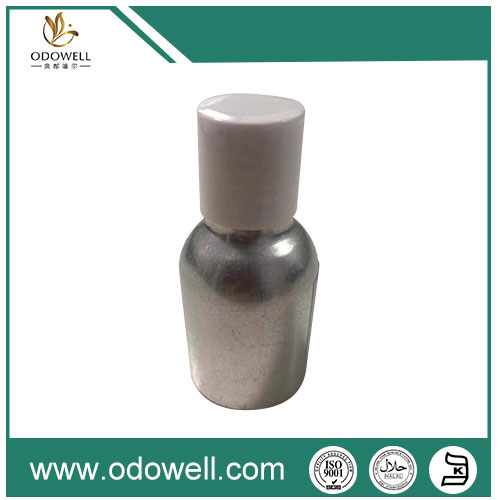Natural Aroma Chemicals is a term used for the compounds that are extracted from natural resources and used to create fragrances or flavors. These are the same compounds that can be found in various fruits, vegetables, and flowers. They are responsible for the distinctive scent of each plant, and some of these chemicals can also be found in animals. Natural Aroma Chemicals are being used in a variety of industries such as perfume, food & beverages, personal care, and household cleaners.

Why are Natural Aroma Chemicals important?
Natural Aroma Chemicals play a significant role in different aspects of our lives. In the perfume industry, these compounds determine the scent of the product, and their unique combination creates a distinct fragrance. In the food and beverage industry, these chemicals are used to provide flavor and improve the taste of the products. These compounds are also used in the personal care industry, where they are utilized in various products, including shampoo, soap, lotions, and many others.
How are Natural Aroma Chemicals extracted?
Natural Aroma Chemicals are extracted from various natural sources such as flowers, plants, and animals. The most common extraction methods are steam distillation, cold-pressing, and solvent extraction. Steam distillation is a process that involves passing steam through plant material to extract its essential oils. Cold-pressing is used to extract oils from citrus fruit peels. Solvent extraction is used when the desired chemical cannot be obtained through distillation or pressing. In this method, a solvent is used to extract the chemical compounds from the natural source.
What are the advantages of using Natural Aroma Chemicals?
Using Natural Aroma Chemicals has several advantages. Firstly, they are extracted directly from natural sources, making them a sustainable and eco-friendly option. Secondly, they are free from synthetic chemicals and additives, making them a healthier option for humans and the environment. Finally, natural aroma chemicals provide distinct and unique fragrances that are not replicable by synthetic alternatives.
Conclusion
In conclusion, Natural Aroma Chemicals are an essential ingredient in the fragrance, flavor, and personal care industry, among others. These organic compounds are a sustainable and healthy option. The use of Natural Aroma Chemicals provides unique fragrances and flavors that are not replicable by synthetic alternatives.
KUNSHAN ODOWELL CO., LTD is a leading supplier of Natural Aroma Chemicals. We provide our customers with high-quality and sustainable natural aroma chemicals. You can visit our website at
https://www.odowell.com to learn more about our products and services. If you have any questions or inquiries, please do not hesitate to contact us at
shirleyxu@odowell.com.
Scientific Papers
1. Burt, S. (2004). Essential oils: their antibacterial properties and potential applications in foods--a review. International journal of food microbiology, 94(3), 223-253.
2. Gűlçin, İ., Oktay, M., Kıreçcı, E., & Küfrevıoǧlu, Ö. İ. (2003). Antioxidant, antimicrobial, antiulcer and analgesic activities of nettle (Urtica dioica L.). Journal of Ethnopharmacology, 87(1), 95-100.
3. Ozdemir, G., & Karaman, S. (2020). Plant-based natural product development for antiaging cosmetic industry. Journal of Cosmetic Dermatology, 19(9), 2331-2337.
4. Ravid, U., Putievsky, E., & Katzir, I. (1990). Biological activity of essential oil of Salvia fruticosa Mill. in relation to its composition. Flavour and Fragrance Journal, 5(2), 77-80.
5. Sánchez-Recillas, A., González-Trujano, M. E., & Ramírez-Mendiola, B. L. (2011). Antinociceptive activity and toxicological evaluation of the essential oil of Salvia elegans from central Mexico. Planta medica, 77(14), 1659-1664.
6. Sgarbossa, A., Giacomelli, E., Buzzini, P., & Peri, C. (2007). Composition and antifungal activity of essential oils of Erigeron floribundus and Erigeron bonariensis. Natural product research, 21(6), 511-516.
7. Silva, F. V., Guimarães, A. G., Silva, E. R., Sousa-Neto, B. P., & Machado, A. J. (2012). Antimicrobial activity, cytotoxicity and DNA damage-causing potential of four Brazilian medicinal plants. Brazilian Journal of Pharmacognosy, 22(5), 1030-1038.
8. Srivastava, J. K., Shankar, E., & Gupta, S. (2010). Chamomile: A herbal medicine of the past with bright future. Molecular medicine reports, 3(6), 895-901.
9. Teshima, R., Okada, Y., & Kawashima, K. (1999). Insecticidal activity of basil oil, trans-anethole and estragole derived from basil essential oil against aphid. Bioscience, Biotechnology, and Biochemistry, 63(12), 2236-2238.
10. Tian, J., Ban, X., Zeng, H., He, J., & Huang, B. (2010). Chemical composition and antifungal activity of essential oil from Cicuta virosa L. var. latisecta Celak. Journal of ethnopharmacology, 127(2), 346-349.

